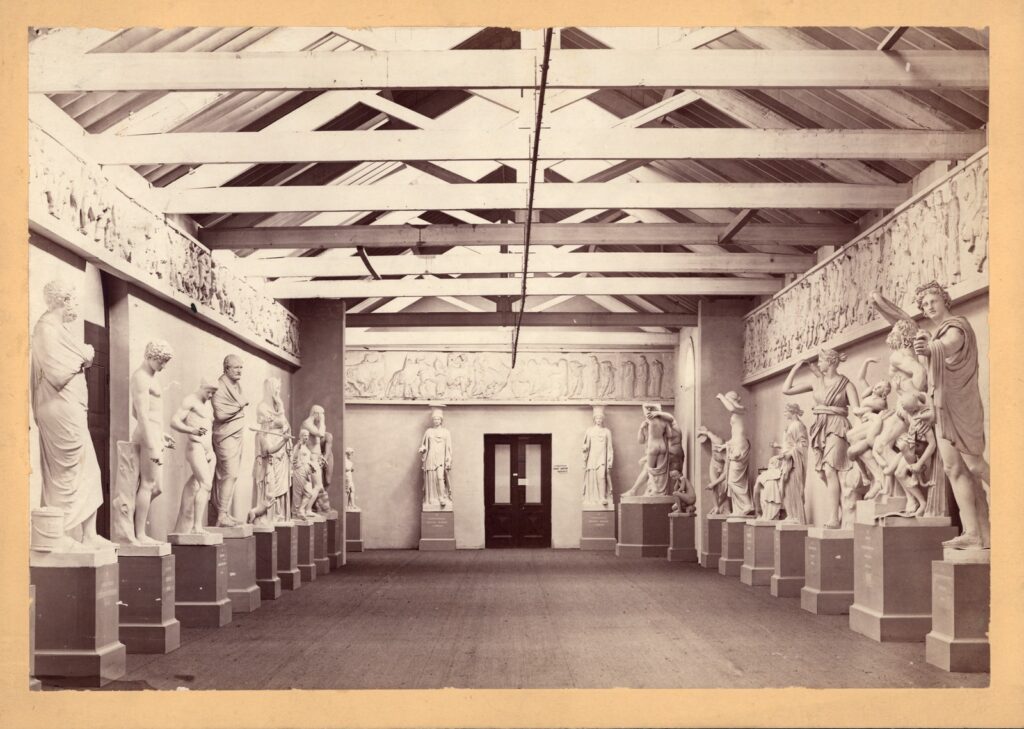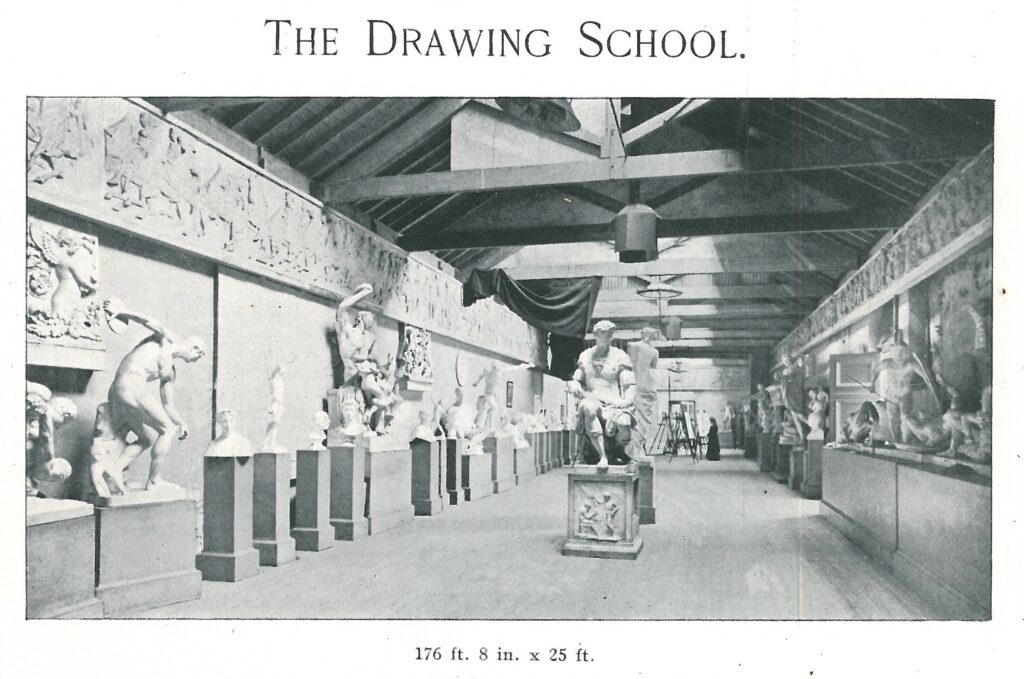The early engravings and photographs of Melbourne’s plaster casts, listed below, provide valuable information on the changing location and arrangement of the collection, as well as helping with identification of individual casts. Nos.1-3 document their initial exhibition in the first MPL building in the 1860s. Nos.4-8 and 10 show the casts in the Sculpture Gallery located in the new north wing constructed in 1866 (mirrored by the temporary Picture Gallery to the south); and no.9 shows a further group of casts displayed in the main library building in the 1880s. Nos.1-3, 5-6, 9 and 10 can be dated precisely. For higher resolution photos, use links indicated.
1. 1863
Vestibule of the Public Library, Melbourne (wood engraving published in The Australian news for home readers, 21 October 1863) [SLV IAN21/10/63/1]
This view shows part of what seems to have been the earliest arrangement of the plaster casts acquired c.1860-62, together with (in the foreground) the two zinc lions later installed outside the Library entrance: see * Unknown (Italian 19C?) Two lions {1862} [SC]. The amateurish style of the anonymous engraving makes identification of some of the plaster casts difficult, but recognizable examples include: to the left, Maternal Affection (I.78) and Michelangelo’s Taddei Tondo (I.67); centre left, Amazon (I.6) and Hercules & Hebe (I.62); centre background, Canephora (I.26 or I.27), (?) Venus Genetrix (I.106) and Discobolus (I.46), and, at the far right, Dorothea (I.47). The architecture, as in overviews 2 & 3 below, indicates that the exhibition area was the ground floor area of the main MPL building, the Library’s first “Sculpture Gallery.”
2. 1866 (1)
The Sculpture Gallery, Public Library Melbourne (wood engraving by Frederick Grosse after Oswald Rose Campbell, published in The Australian news for home readers, 27 July 1866) [SLV IAN27-07-66 SUPP]
One of two similar views dating from 1866 (see also no.3 below), this engraving appears to show the revised arrangement of the casts in the MPL’s first main building (below Queen’s Hall). The precise detail enables identification of a number of the casts. Antinous (I.9) and Germanicus (I.55) are prominent in the left and right foreground; Giambologna’s Mercury (I.80) is centrally placed, with Pudicitia (I.95) and Discobolus (standing) (I.45) to his right; clearly visible at the back is Laocoon (I.75), behind the so-called Fighting Gladiator (I.58). Oswald Rose Campbell (1820-87), who made the drawing for this print, later taught drawing at the National Gallery School (1876-86).
3. 1866 (2)
Sculpture Gallery at the Public Library (wood engraving by Samuel Calvert, published in The Illustrated Melbourne Post, 27 July 1866) [SLV IMP27/07/66/305]

4. c.1870
Sculpture Gallery, north wing, National Gallery of Victoria, Melbourne (albumen silver photograph) [SLV H22789]

5. 1872 (1)
Sculpture Gallery, National Gallery of Victoria (albumen silver photograph by Charles Nettleton, date-stamped July 1872) [SLV H96.160/1789]

6. 1872 (2)
Sculpture Gallery, National Gallery of Victoria (albumen silver photograph by Charles Nettleton, date-stamped July 1872) [SLV H96.160/1790]

7. 1880s-90s
Untitled albumen silver photograph [SLV H11790]

8. 1880s-90s
Untitled albumen silver photograph [SLV H4578]

9. 1886-87
Statuary Gallery, Melbourne Public Library (albumen silver photograph by Charles Rudd, from his series New Views of Melbourne; NGV, gift of Terence Lane, 1990) [NGV PH6-1990]

10. 1905
Photograph of the cast gallery published in the 1905 NGV catalogue (p.154) [SLV]




